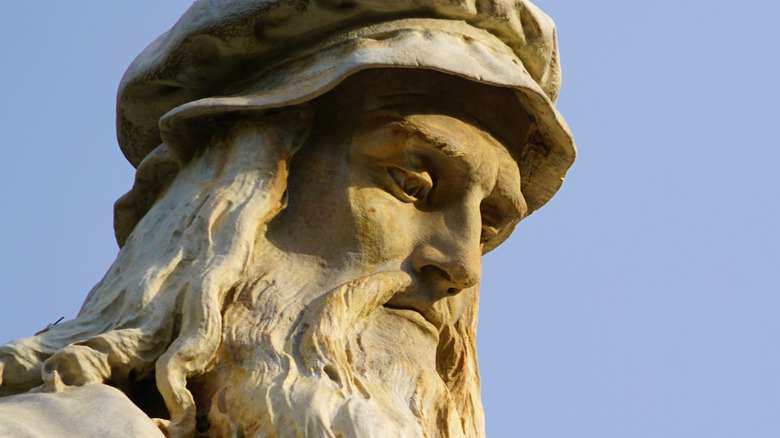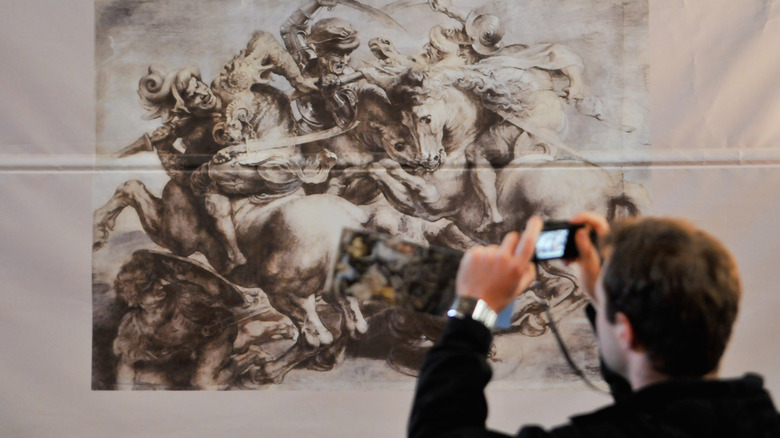Is This Why We Can't Find The Lost Mural Of The Battle Of Anghiari By Da Vinci?
The thought of finding a true treasure tantalizes — which is why people look for sunken ships to investigate, and wander beaches and trails with metal detectors. Most seekers of gold, lost art, eternal youth, or religious relics never find their fortunes. Occasional victories happen, like when Michigan medical student Jack Steuf discovered the $2-million trove of art dealer Forest Fenn in 2020, reported The New York Times. But generally, treasure hunters go home empty-handed. Still, if the thought of finding riches captivates you, valuables like Leonardo da Vinci's lost mural of the Battle of Anghiari may still remain at large.
The artwork depicts the 1440 clash between the Italian League and Milan, reported Live Science. The painting disappeared during a remodeling of the Palazzo Vecchio, where it resided. Architect and painter Giorgio Vasari oversaw the renovations. Da Vinci received the commission to create the work in 1503 in Great Council Hall of the building, reported the Leonardo da Vinci website. Da Vinci experimented with his creation, first using a plaster technique he learned in a book by the Roman author Pliny. The results turned disastrous early in the process, and da Vinci tried an encaustic method next, which used heat to stabilize the art. While he completed the painting, within 14 years, parts of it disappeared from the canvas. The public only knows what the original work looked like because of the many copies other artists made, including Peter Paul Ruben's 1603 version that Italian Renaissance Art called possibly the most faithful to da Vinci's original work.
A mystery solved ... or not?
Da Vinci's mural showed a 54-foot by 21-foot rendering of the June 29, 1440 attack on Florentine papal troops at Anghiari by Milan commander Niccolo Piccinino at various points of the battle, including an oft-copied scene showing the entanglement of horses and soldiers, according to Italian Renaissance Art. A group of art experts reported that the mural never left the Florence town hall's building, according to Live Science. They believe Vasari merely painted over da Vinci's original. But their findings never received confirmation, even after ultrasonic tests were conducted in 1976, reported the Leonardo da Vinci website. Researcher Maurizio Seracini also used imaging technology to explore what was behind Vasari's work, reported Art News. Authorities discontinued the project in 2012 after public outcry that the investigations might damage the architecture.
A study released in 2019 claims that da Vinci's work never existed. Art Historians Roberta Barsanti, Giancula Belli, Emanuela Ferretti, and Cecilia Frosinini think that the method used, which included an oil and gesso layer, could not keep paint on the wall. "This process, which was always thought to be part of the painting, was instead meant for the preparation of the wall before the paint," as art historian Francesca Fiorani, author of "The Shadow Drawing: How Science Taught Leonardo to Paint," told Art News. "Since the process to prepare the wall was not successful, Leonardo never painted on it. This means that Leonardo's battle existed only as a cartoon," a kind of preliminary sketch, "never as paint on a wall."

